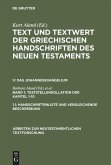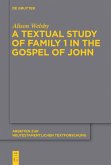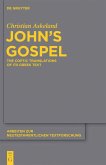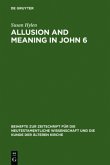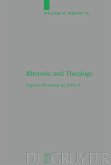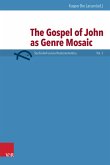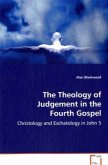Ancient manuscripts of John's Gospel containing hermeneiai have long puzzled scholars, provoking debate about their origins, purpose, and use. The fragmentary nature of the early evidence has impeded progress towards a better understanding of these specialized books.
The present study shows that these books are "Divining Gospels"-editions of John's Gospel incorporating lot divination materials for use in fortune-telling. The study centers on material presented here for the first time: the text and translation of a unique sixth-century Syriac manuscript, the earliest and most complete example of a hermeneia Gospel. An analysis of the Syriac along with evidence from Greek, Coptic, Latin, and Armenian versions show they all preserve vestiges of the same apparatus, disseminated widely at an early time throughout many different Christian communities. These books must be situated squarely within the development of divinatory practices in early and late antique Christianity. However, they represent a true hermeneutic, a method by which interpreters brought the potency of the Bible to bear on the everyday concerns of people who consulted them for help.
Furthermore, the Divining Gospel draws on the special aura that John's Gospel held in the Christian imagination, both as text and as textual object. An analysis of the interplay between the biblical text and sacred codex, the oracles, the ritual practitioner, and the client enrich our appreciation of this distinctive hermeneutic. Contextualizing these materials in popular use illuminates the fraught relationships between the ecclesial establishment, ritual experts operating on the margins of orthodox respectability, and lay clients seeking knowledge and help.
Hinweis: Dieser Artikel kann nur an eine deutsche Lieferadresse ausgeliefert werden.
The present study shows that these books are "Divining Gospels"-editions of John's Gospel incorporating lot divination materials for use in fortune-telling. The study centers on material presented here for the first time: the text and translation of a unique sixth-century Syriac manuscript, the earliest and most complete example of a hermeneia Gospel. An analysis of the Syriac along with evidence from Greek, Coptic, Latin, and Armenian versions show they all preserve vestiges of the same apparatus, disseminated widely at an early time throughout many different Christian communities. These books must be situated squarely within the development of divinatory practices in early and late antique Christianity. However, they represent a true hermeneutic, a method by which interpreters brought the potency of the Bible to bear on the everyday concerns of people who consulted them for help.
Furthermore, the Divining Gospel draws on the special aura that John's Gospel held in the Christian imagination, both as text and as textual object. An analysis of the interplay between the biblical text and sacred codex, the oracles, the ritual practitioner, and the client enrich our appreciation of this distinctive hermeneutic. Contextualizing these materials in popular use illuminates the fraught relationships between the ecclesial establishment, ritual experts operating on the margins of orthodox respectability, and lay clients seeking knowledge and help.
Hinweis: Dieser Artikel kann nur an eine deutsche Lieferadresse ausgeliefert werden.
"[...] this is an outstanding piece of scholarship and a fundamental work, which will remain
so for years to come." Florin Filimon in: Byzantine Review 03.2021.009, 99-105.
"Childers's work is a monument of much learned erudition, thoroughgoing explication, and empassioned attention to detail. Readers will be richly rewarded by a close and advertent reading of this important Syriac manuscript, to which the writer has brought the full force of his academic rigor, heightened acumen, and impressively broad command of the primary and secondary literature." Roy D. Kotansky in: Early Christianity 12, no. 4 (2021): 495-523.
"Childers has made a tremendous achievement in integrating BL Add 17,119 and the evidence from Greek, Armenian, Coptic, and Latin manuscripts into a single coherent explication. In effect, he has singlehandedly illuminated late antique Syriac divination as a component of a multicultural Christian tradition. [...] All in all, Childers's study is a crucial act in the understanding of late antique Syriac divination within its wider Christian context. The book succeeds on many levels, both as a thorough philological treatment of BL Add 17,119 and as a contribution to the cultural history of late antique Christianity." David Calabro, in: Hugoye. Journal of Syriac Studies 25.1 (2022): 283-295.
so for years to come." Florin Filimon in: Byzantine Review 03.2021.009, 99-105.
"Childers's work is a monument of much learned erudition, thoroughgoing explication, and empassioned attention to detail. Readers will be richly rewarded by a close and advertent reading of this important Syriac manuscript, to which the writer has brought the full force of his academic rigor, heightened acumen, and impressively broad command of the primary and secondary literature." Roy D. Kotansky in: Early Christianity 12, no. 4 (2021): 495-523.
"Childers has made a tremendous achievement in integrating BL Add 17,119 and the evidence from Greek, Armenian, Coptic, and Latin manuscripts into a single coherent explication. In effect, he has singlehandedly illuminated late antique Syriac divination as a component of a multicultural Christian tradition. [...] All in all, Childers's study is a crucial act in the understanding of late antique Syriac divination within its wider Christian context. The book succeeds on many levels, both as a thorough philological treatment of BL Add 17,119 and as a contribution to the cultural history of late antique Christianity." David Calabro, in: Hugoye. Journal of Syriac Studies 25.1 (2022): 283-295.


